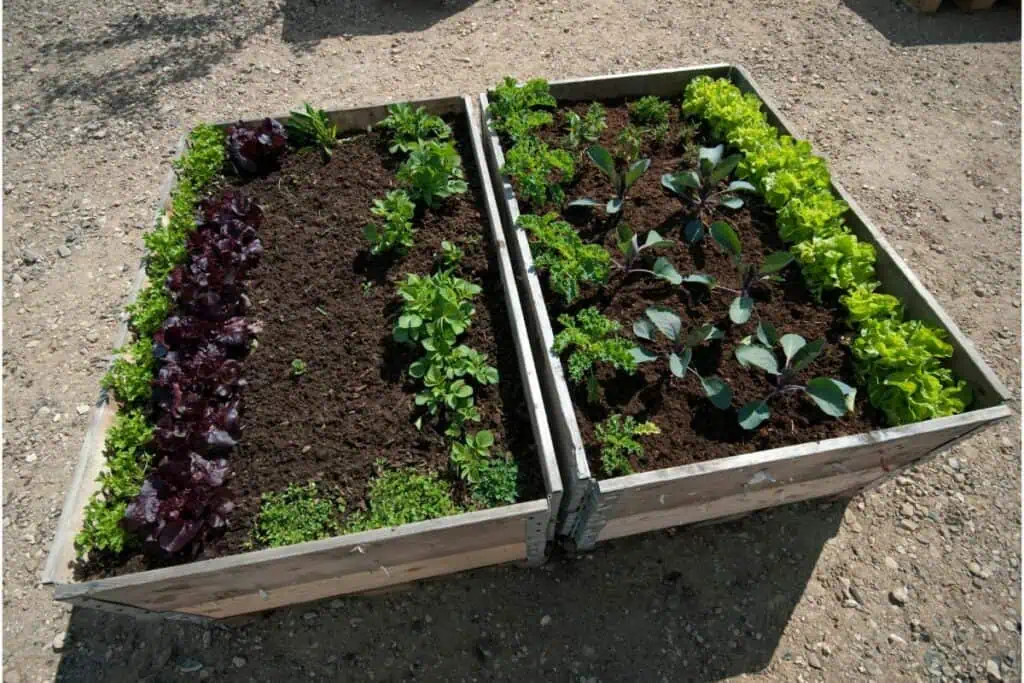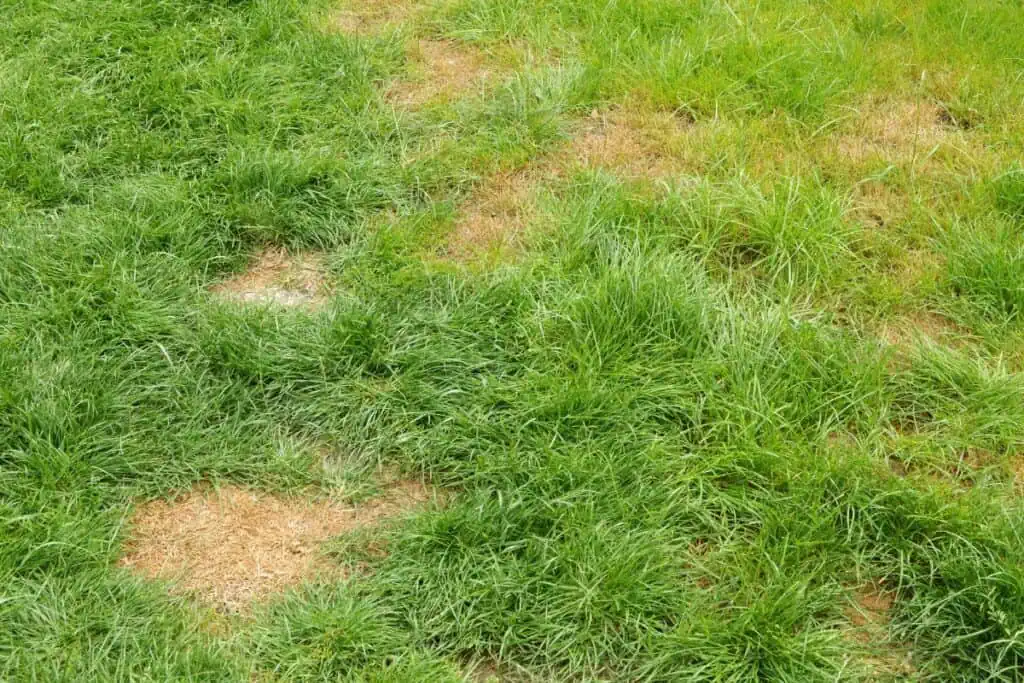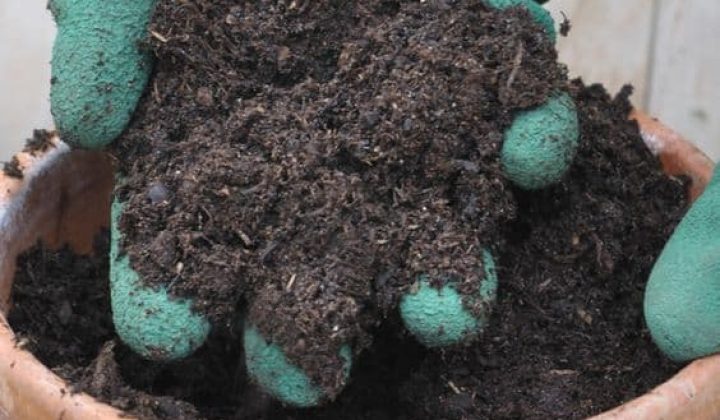Got old potting soil?
Don’t toss it!
There are many creative ways to give it new life. Discover 15 simple and fun ways to reuse your old potting soil. Save money and help the planet.
Let’s get started!
1. Refilling Elevated Planters

Elevated plant beds require periodic replenishment due to soil compaction and nutrient depletion. Refresh your garden beds by:
- Incorporating spent potting mix to occupy space
- Blending in compost to rejuvenate nutrient levels
- Adding soil conditioners to enhance texture and fertility
2. Enhancing Soil for Reuse in Plant Containers
Rejuvenating previously used soil for your containers can be highly effective if done correctly. Before potting new greenery, revitalize the earth by incorporating a mixture of new compost and sterile potting mix to reintroduce essential organic materials.
This practice not only enriches the soil structure for improved aeration and moisture retention but also replenishes vital nutrients that former plantings may have depleted.
In addition, integrating a dose of slow-release fertilizer is crucial as the initial nutrients present are likely to have diminished or been washed away.
For optimal growth conditions, when resorting to the old growth medium, blending a minimum of 30% fresh soil with the old potting soil is advisable to achieve the best environment for your plants.
3. Rejuvenating Soil in Plant Containers
- Periodically, your potted plants need fresh soil. Over time, the existing soil can become dense and depleted of nutrients.
- Mixing old potting mix with new, enriched soil invigorates the growth environment of your potted plants, especially perennials.
- To prevent bringing pests or diseases indoors, sterilize old potting soil before using it for houseplants.
- Enrich the blend: Incorporate fertilizer to the old and new soil mixture to nourish your plants effectively.
4. How to Propagate Plants from Cuttings

To expand your collection of plants without cost, consider rooting segments from existing plants. Suitable for a variety of plant types, including soft-stemmed greenery as well as woody species like berry plants and bushes, this technique especially excels with woody segments during their dormant phase.
Here’s a method to spur root development without the need for nutrient-rich soil:
- Prepare a Sterile Medium: Opt for a sterile, soilless option—sand, vermiculite, or coconut coir—to maintain moisture without providing nutrients. If using old potting soil, ensure it’s properly sterilized to prevent disease.
- Process: Sterilize the potting soil by heating it, which eliminates potential pathogens, ensuring a robust start for the cuttings.
- Planting: Insert the cuttings into the prepared medium and maintain adequate moisture levels for root establishment.
By utilizing recycled soil and plant cuttings, you can yield a bounty of new plants at no additional cost.
5. Cultivating Plants Suitable for Low-Nutrient Environments
Not every plant requires a rich nutrient base to flourish. Consider plants such as various Mediterranean herbs and certain wildflowers, which require minimal nutrients from their growth medium.
When a nutrient-demanding plant like a tomato has been grown in a pot, it’s wise to follow it with a more low-maintenance species. This technique is parallel to crop rotation in outdoor gardening.
Here’s a quick list of plants that grow well in less fertile soil:
- Lavender
- Echinacea
- Mint and its relatives
- Perennial Sunflowers
- Bleeding Hearts
- Hellebores
- Fennel
- Sage
- Rosemary
These examples can thrive following nutrient-intensive plants, making the most of the remaining soil conditions.
6. Repair Low Spots and Depressions in Your Yard
To address dips and holes in your garden:
- Reutilize Used Potting Mix: Apply spent potting soil to level out uneven areas.
- Replanting: Directly sow seeds or transplant into the refreshed soil.
- Resilience: The existing earth provides ample nutrients to replenish the re-used material.
7. Repairing Lawn Spots Damaged by Urine

Refresh areas of your lawn that have turned yellow and appear burned from pet urine. Begin by drenching these spots with water to cleanse any residual urine, particularly if recent rainfall hasn’t already accomplished this.
This preliminary step helps to reduce the urine concentration, lessening its harmful impact.
Take the following steps to restore your lawn’s appearance:
- Prepare the Area: Loosen the soil at the damaged spot using a rake.
- Patch Mixture: Combine fresh potting soil with grass seed to create a nurturing patch mixture.
- Apply the Mixture: Spread this blend over the affected area, ensuring even coverage for optimal growth.
- Final Watering: After application, water the newly patched area to keep it sufficiently moist, encouraging seed germination.
Utilizing potting soil in your mixture will enhance its ability to retain moisture, providing an ideal environment for the grass seed to sprout and thrive.
8. Thin Application to Revitalize Turf
- Organic Enhancement: Evenly distribute spent potting soil across your lawn to enhance organic content.
- Avoid Overapplication: Ensure not to cover the grass densely to prevent suffocation.
- Economical Disposal: Utilize old potting soil as a lawn treatment rather than discarding it wastefully.
- Landfill Relief: This method aids in reducing unnecessary landfill waste without incurring costs.
9. Enrichment Through Used Potting Mix
- Repurpose your used potting mix by blending it into your garden soil.
- Nutrient depletion in old potting soil isn’t a concern due to the accompanying garden soil.
- Benefits:
- Increases the soil’s ability to retain water.
- Eco-friendly way to utilize residual potting mix.
10. Adding Old Soil to the Compost Pile

- Browns & Greens: Ensure a balance by combining carbon-rich materials (browns) with nitrogen-heavy items (greens).
- Potting Soil Reuse: Incorporate used potting soil into your compost to enhance its volume.
- Heat Benefits: Trust the compost’s high temperature to neutralize pathogens, pests, and seeds.
- When finished, rejuvenated potting soil from your compost enhances the growth in your garden.
11. Securing Compost Holes or Trenches
To suppress unpleasant odors and initiate the decomposition process, it’s advisable to cover composting pits once filled.
Repurposing old potting mix as a top layer can be effective for concealing these spots after depositing organic waste, or when the space is entirely occupied. Should the potting soil supply run low, leveraging natural earth from your surroundings acts as a suitable alternative to prolong the functionality of the used potting material.
12. Starting Your Own Worm Composting System
To initiate a worm composting system, simply gather some spent potting mix as a habitat for the worms. Over time, worms will transform your kitchen scraps into a rich, organic substance beneficial for your plants.
- Materials Needed:
- Spent potting mix
- Kitchen waste
Remember, the quality of the potting soil is not crucial since the primary nutrients will stem from your organic waste. The soil’s purpose is to provide a suitable environment for the worms to decompose the household scraps efficiently.
13. Additional Dirt for Filling Plant Holes
When planting, you may find yourself short on dirt to refill the holes. Utilize your spare potting mix to enrich the plant’s new environment.
The combination of nutrients and natural components already present in the ground, coupled with your extra potting mix, ensures a thorough fill.
14. Refilling Excavation Gaps in the Garden
When you extract large boulders from your garden, you might find yourself with sizable voids. Utilize spent potting mix as a sustainable option to refill these openings:
- Preserve your garden’s balance. Avoid transporting soil from different areas to prevent creating additional gaps.
- Leverage existing resources. Used potting soil is nutrient-rich and can enhance soil consistency, promoting garden bed leveling.
- Ensure plant health. This approach safeguards the growing conditions for surrounding vegetation.
15. Addressing Winter Root Exposure in Plants
Repeated freezing and thawing can cause plant roots to lift out of the ground, endangering shrubs and perennials. To mitigate this, regularly inspect your plants during winter. When you observe roots have become exposed, or the soil has been worn away, take action:
- Replenish the Soil: Utilize old potting soil as a fill to cover the roots, safeguarding them from the cold.
- Monitor Plant Stability: Ensuring your plants remain firmly in the ground is key to their survival through the frosty months.
- Protect Exposed Roots: Promptly covering any bare roots with soil can prevent plant loss.
Inappropriate Situations for Repurposing Potting Soil
Avoid These Scenarios:
- Seedling Soil: The texture of used potting mix is not optimal for germinating seeds, which require a fine medium.
- New Seedlings: Fresh soil is recommended for repotting. If repurposing soil is necessary, sterilization is crucial to prevent disease.
- Soil Condition: Avoid reuse if the soil feels too hard or compacted.
- Soil Age: A mix older than two years is unlikely to sustain plant growth effectively.
- Unpleasant Odor: Soil emitting a bad smell may indicate decay and should not be reused.
- Mold Presence: White moldy areas within the soil are a sign it’s time to discard or sterilize the mix.
- Prior Plant Issues: Do not repurpose soil from plants that suffered diseases or rot without sterilization.
- Pest Infested: Soil with harmful insects requires treatment before any potential reuse.
Sterilization: A Must in Certain Cases
Sterilizing your potting mix can extend its usefulness, especially if there’s evidence of pests or disease. For methods to do this, see our guide „3 Easy Ways to Sterilize Used Potting Soil.“
Alternative Uses:
Instead of discarding unusable potting mix, consider these options:
- Composting: Enhance your compost pile by adding spent potting mix.
- Lawn and Garden: Utilize the old soil to bulk up your lawn or garden soil or fill gaps and holes.
